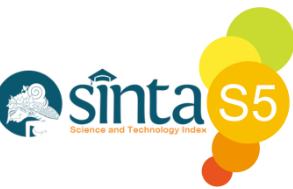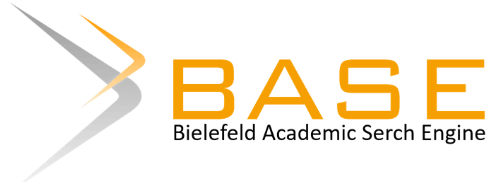Abstract
This study aims to explore student satisfaction with the use of podcasts as a learning medium in the Non-News Radio Production course. A qualitative approach was used, with three open-ended questions posed to students: (1) What different experiences did you have when listening to the course material via podcast?(2) Did listening to the course material through podcasts help you focus on understanding the material? And why? And (3) provide your opinion on the Adapto podcast material shared during the Non-News Radio Production course in the 4th semester. The data obtained was thematically analyzed to identify the main emerging themes. The results indicate that students appreciated the flexibility and ease of access provided by the podcasts. Some students felt that podcasts helped them focus better and understand the materials, while others mentioned challenges in maintaining concentration. Feedback on the Adapto podcast content was generally positive, though students also offered suggestions for improvement. These findings suggest that podcasts hold significant potential as an effective learning medium, especially in audio-based courses such as Non-News Radio Production. However, to maximize its benefits, attention should be given to content design and the integration of interactive elements to enhance students’ engagements.
Bahasa Abstract
Penelitian ini bertujuan untuk mengeksplorasi kepuasan mahasiswa terhadap penggunaan podcast sebagai media pembelajaran. Studi ini menggunakan pendekatan kualitatif dengan mengajukan tiga pertanyaan terbuka kepada mahasiswa: (1) Apa pengalaman berbeda yang kamu rasakan ketika mendengarkan materi ajar kuliah via podcast?; (2) Apakah mendengarkan materi ajar melalui podcast membantumu untuk fokus memahami materi? Mengapa?; dan (3) Berikan pendapatmu tentang materi podcast Adapto yang telah dibagikan selama perkuliahan Produksi Non Berita Radio di semester 4 ini. Data yang diperoleh dianalisis secara tematik untuk mengidentifikasi tema utama yang muncul. Hasil penelitian menunjukkan bahwa mahasiswa menghargai fleksibilitas dan kemudahan akses yang ditawarkan oleh podcast. Beberapa mahasiswa merasa bahwa podcast membantu mereka lebih fokus dan memahami materi dengan lebih baik, sementara yang lain mengemukakan tantangan dalam mempertahankan konsentrasi. Pendapat tentang konten podcast Adapto umumnya positif, namun mahasiswa juga memberikan saran untuk peningkatan. Temuan ini menunjukkan bahwa podcast memiliki potensi besar sebagai media pembelajaran yang efektif, terutama dalam konteks mata kuliah yang berbasis audio seperti Produksi Non Berita Radio. Namun, untuk memaksimalkan manfaatnya, perlu adanya perhatian terhadap desain konten dan integrasi elemen interaktif untuk meningkatkan keterlibatan mahasiswa.
References
Amsa, H., & Efendi, N. (2022). Need Analysis for Podcast Development in Teaching Speaking During Pandemic Covid 19. Pendekar: Jurnal Pendidikan Berkarakter, 5(3), 189. https://doi.org/10.31764/pendekar.v5i3.10996
Bimantara, A. H. (2024). PENGEMBANGAN E-LEARNING CONTENT AUDIO-VISUAL PADA MATERI KEBARUAN (NOVELTY) DALAM RANAH PENELITIAN PENDIDIKAN. repository.unj.ac.id. http://repository.unj.ac.id/id/eprint/44269
Bimantara, A. H., Murtinugraha, R. E., & ... (2024). E-learning Content Berbasis Podcast Sebagai Sarana Penguatan pada Materi Keterbaruan Penelitian (Novelty). Jurnal Pendidikan …. https://wnj.westscience-press.com/index.php/jpdws/article/view/938
Boyatzis, R. E. (1998). Transforming qualitative information: Thematic analysis and code development. Sage Publications, Inc.
Braun, V., & Clarke, V. (2023). Toward good practice in thematic analysis: Avoiding common problems and be(com)ing a knowing researcher. International Journal of Transgender Health. https://doi.org/10.1080/26895269.2022.2129597
Fawziah, S. A. (2022). Motif dan kepuasan penonton podcast youtube dengan talk show televisi. repository.uph.edu. http://repository.uph.edu/51190/
Febriani, N. (2023). Tingkat Kepuasan Generasi Muda Terhadap Penggunaan Podcast Pada Spotify Di Desa Tanjong Kecamatan Bupon Kabupaten Luwu. repository.iainpalopo.ac.id. http://repository.iainpalopo.ac.id/id/eprint/7381/1/SKRIPSI_NIMRA_Bundel.pdf
Fernandez, V., Simo, P., & Sallan, J. M. (2009). Podcasting: A new technological tool to facilitate good practice in higher education. Computers & Education, 53(2), 385–392. https://doi.org/10.1016/J.COMPEDU.2009.02.014
García-Marín, D. (2020). Mapping the factors that determine engagement in podcasting: Design from the users and podcasters’experience. Communication and Society, 33(2), 49–63. https://doi.org/10.15581/003.33.2.49-63
Gomm, R. (2008). Social Research Methodology. Social Research Methodology. https://doi.org/10.1007/978-0-230-22911-2
Hansen, K., & Świderska, A. (2024). Integrating open-and closed-ended questions on attitudes towards outgroups with different methods of text analysis. In Behavior Research Methods. Springer. https://doi.org/10.3758/s13428-023-02218-x
Hutabarat, P. M. (2020). Pengembangan Podcast sebagai Media Suplemen Pembelajaran Berbasis Digital pada Perguruan Tinggi. Jurnal Sosial Humaniora Terapan, 2(2). https://doi.org/10.7454/jsht.v2i2.85
Indahsari, D. (2020). Using podcast for EFL students in language learning. JEES (Journal of English Educators Society), 5(2), 103–108. https://doi.org/10.21070/jees.v5i2.767
Insani, N. N. (2022). Podcasts: Media to Increase Student Learning Motivation. Proceedings of the Annual Civic Education Conference (ACEC 2021), 636(Acec 2021), 519–522. https://doi.org/10.2991/assehr.k.220108.093
Kay, R. H. (2012). Exploring the use of video podcasts in education: A comprehensive review of the literature. Computers in Human Behavior, 28(3), 820–831. https://doi.org/10.1016/j.chb.2012.01.011
Khairunisa, S. A. (2024). ANALISIS FUNGSI PENGGUNAAN SITUS TOFUGU SEBAGAI MEDIA PEMBELAJARAN BAHASA JEPANG BERBASIS INTERNET. repository.unj.ac.id. http://repository.unj.ac.id/id/eprint/45069
McGarr, O. (2009). A review of podcasting in higher education: Its influence on the traditional lecture. Australasian Journal of Educational Technology, 25(3), 309–321. https://doi.org/10.14742/ajet.1136
Neuert, C., Meitinger, K., Behr, D., & Schonlau, M. (2021). The use of open-ended questions in surveys. In … and survey methodology …. ssoar.info. https://www.ssoar.info/ssoar/bitstream/handle/document/73172/ssoar-mda-2021-1-neuert_et_al-Editorial_The_Use_of_Open-ended.pdf
Nozari, A. Y., & Siamian, H. (2015). The effect of applying podcast multimedia teaching system on motivational achievement and learning among the boy students. Acta Informatica Medica, 23(1), 29–32. https://doi.org/10.5455/aim.2015.23.29-32
Panjaitan, J. E. R. (2021). Sosio-demografi dan kepuasan pengguna podcast di Indonesia. Jurnal Spektrum Komunikasi. https://www.journal.stikosa-aws.ac.id/index.php/spektrum/article/view/155
Permatasari, I. (2022). Pengaruh Aspek Pedagogis dan Interaksi Sistem pada Penilaian Usabilitas Sistem E-Learning. Generic, Universitas Sriwijaya, 14(2), 38–44.
Rahmanto, A. N., Putri, I. K., & ... (2023). PENERAPAN DESIGN THINKING DENGAN USABILITY TESTING MENGGUNAKAN SYSTEM USABILITY SCALE PADA ANTARMUKA APLIKASI “CURHAT.” Jurnal Teknik Ilmu Dan …. http://jurnal.polinema.ac.id/index.php/jtia/article/view/2791
Roni Hamdani, A., & Priatna, A. (2020). Efektifitas Implementasi Pembelajaran Daring (Full Online) Dimasa Pandemi Covid- 19 Pada Jenjang Sekolah Dasar Di Kabupaten Subang. Didaktik : Jurnal Ilmiah PGSD STKIP Subang, 6(1), 1–9. https://doi.org/10.36989/didaktik.v6i1.120
Rouder, J., Saucier, O., Kinder, R., & Jans, M. (2021). What to do with all those open-ended responses? Data visualization techniques for survey researchers. In Survey Practice. surveypractice.org. https://www.surveypractice.org/article/25699-what-to-do-with-all-those-open-ended-responses-data-visualization-techniques-for-survey-researchers
Shah, G. U. D., Bhatti, M. N., Iftikhar, M., Qureshi, M. I., & Zaman, K. (2013). Implementation of technology acceptance model in E-learning environment in rural and urban areas of Pakistan. World Applied Sciences Journal, 27(11), 1495–1507. https://doi.org/10.5829/idosi.wasj.2013.27.11.1787
Supendra, D., Kusumastuti, G., Maiziani, F., & Rahmayanti, E. (2022). The Practicality Test Of Audio-Based Podcast Media For Online Learning. SPEKTRUM: Jurnal Pendidikan Luar Sekolah (PLS), 10(2), 299. https://doi.org/10.24036/spektrumpls.v10i2.116977
Yang, L., Tsangouri, C., Sobolev, M., & Estrin, D. (2018). Understanding user interactions with podcast recommendations delivered via voice. RecSys 2018 - 12th ACM Conference on Recommender Systems, 190–194. https://doi.org/10.1145/3240323.3240389
Zellatifanny, C. M. (2020). Trends in disseminating audio on demand content through podcast: An opportunity and challenge in Indonesia. Pekommas. https://www.neliti.com/publications/518797/trends-in-disseminating-audio-on-demand-content-through-podcast-an-opportunity-a
Recommended Citation
Permatasari, Indah; Hutabarat, Peny Meliaty; and Adelina, Erni
(2024)
"Exploring Student Satisfaction in Learning with Podcast Applications: A Qualitative Study Based on Open-Ended Questions,"
Jurnal Vokasi Indonesia: Vol. 12:
No.
2, Article 1.
DOI: 10.7454/jvi.v12i2.1225
Available at:
https://scholarhub.ui.ac.id/jvi/vol12/iss2/1
Included in
Digital Communications and Networking Commons, Educational Methods Commons, Educational Technology Commons








